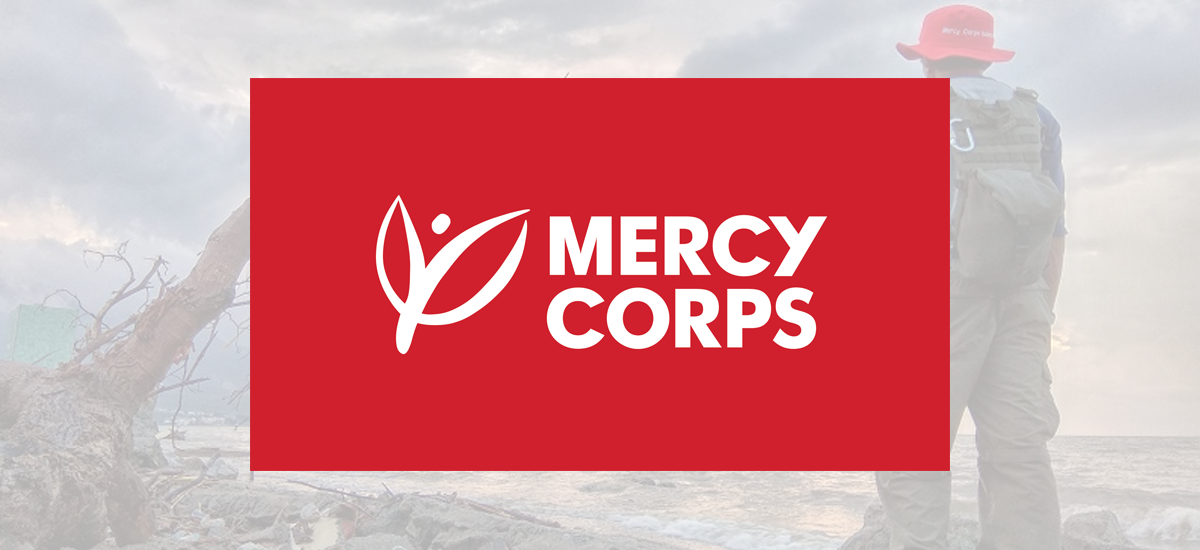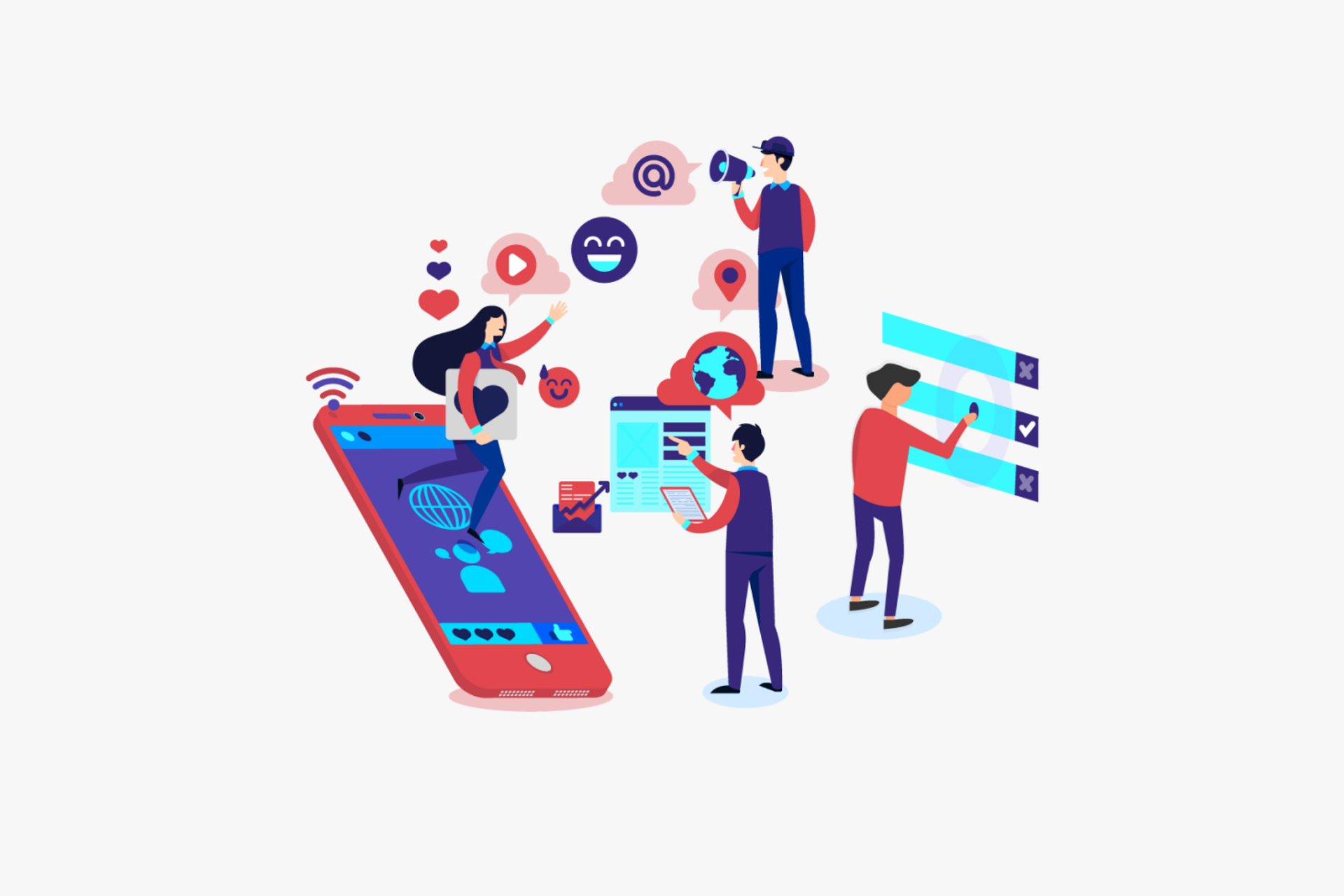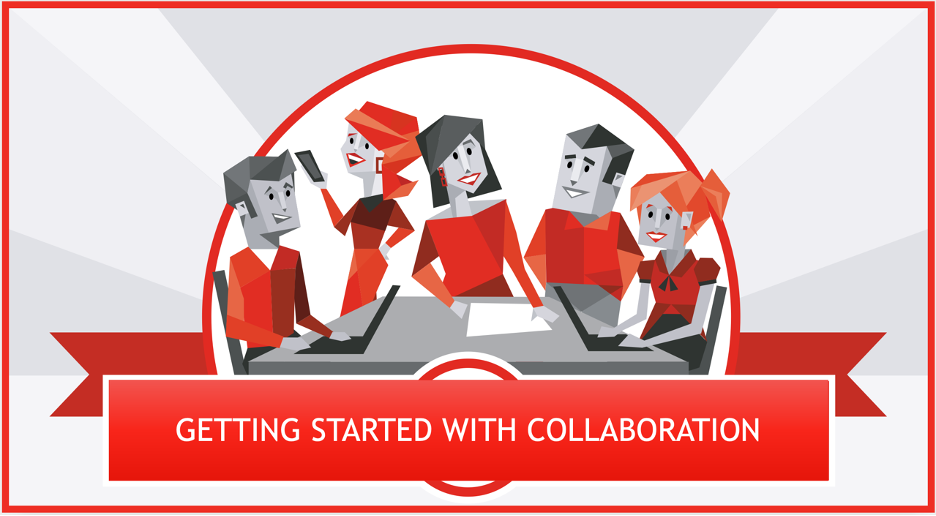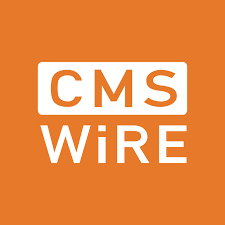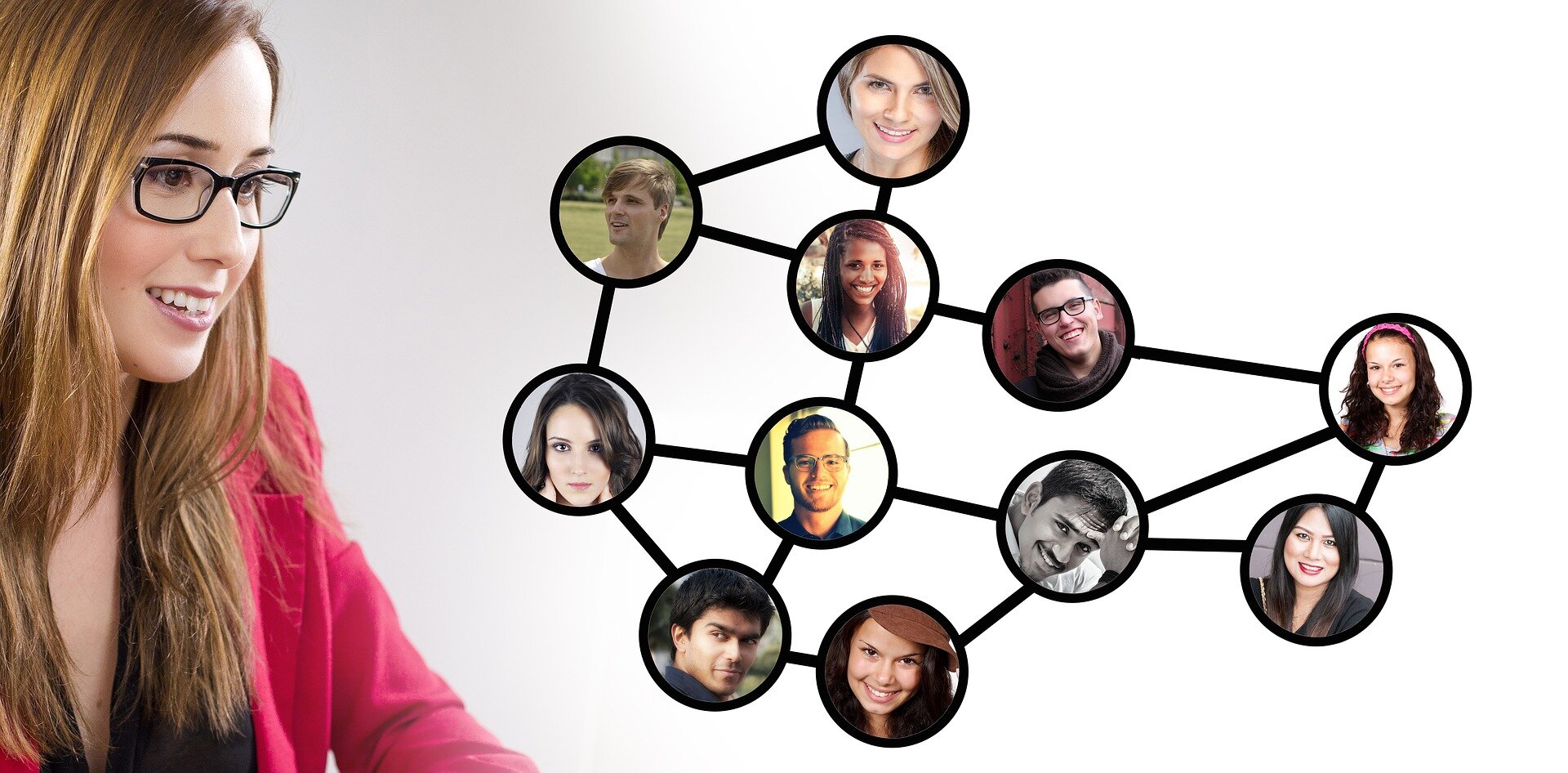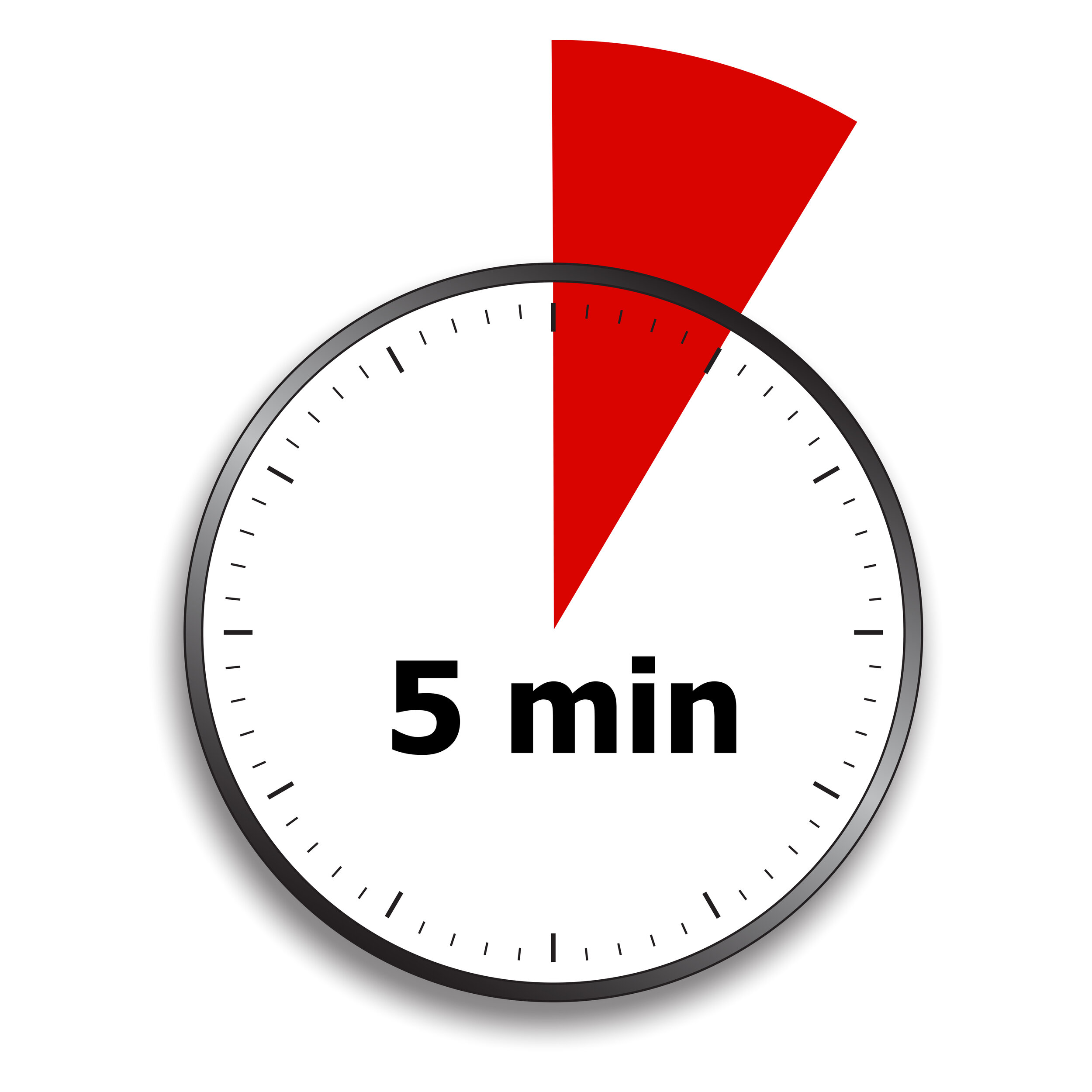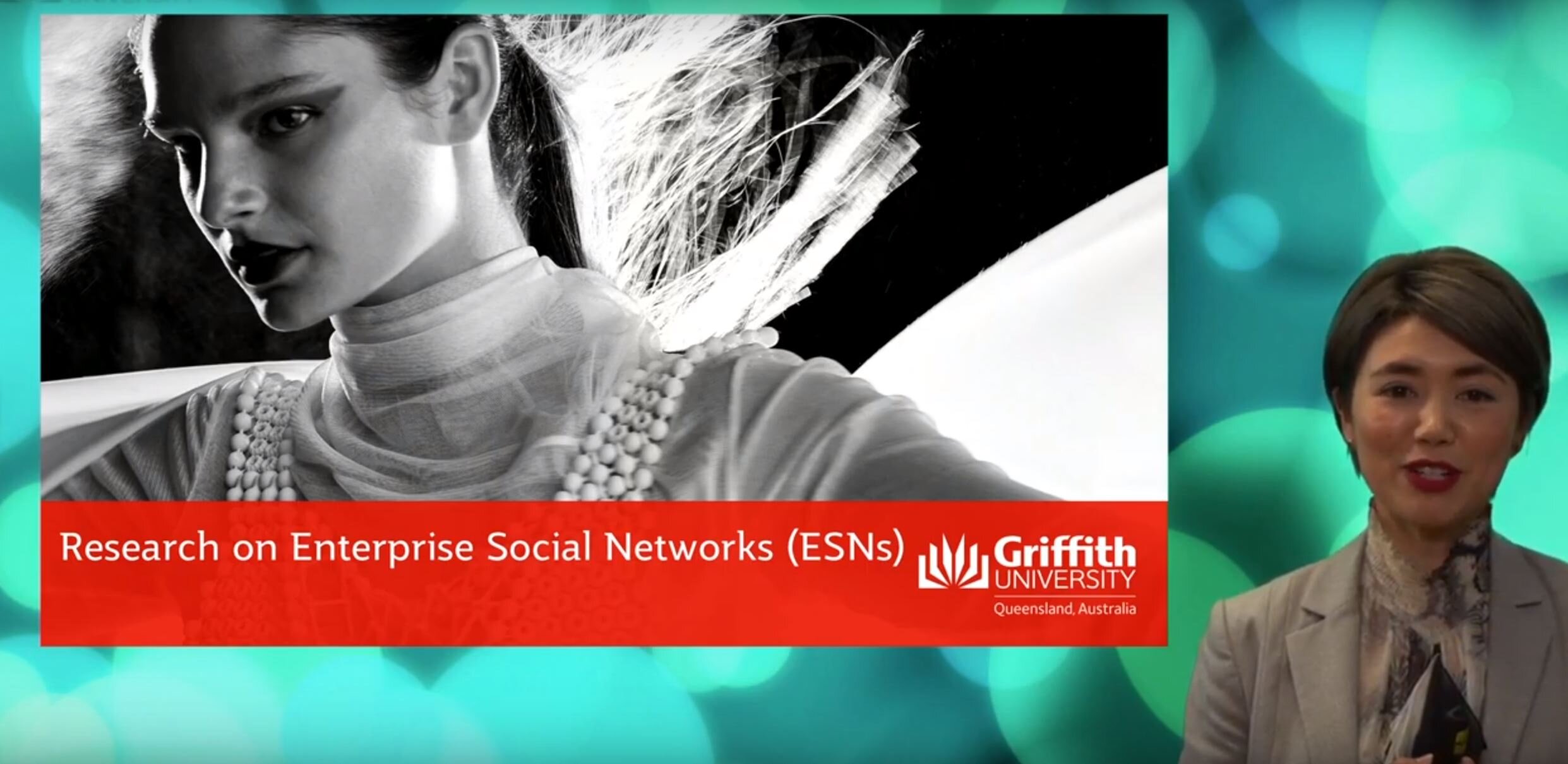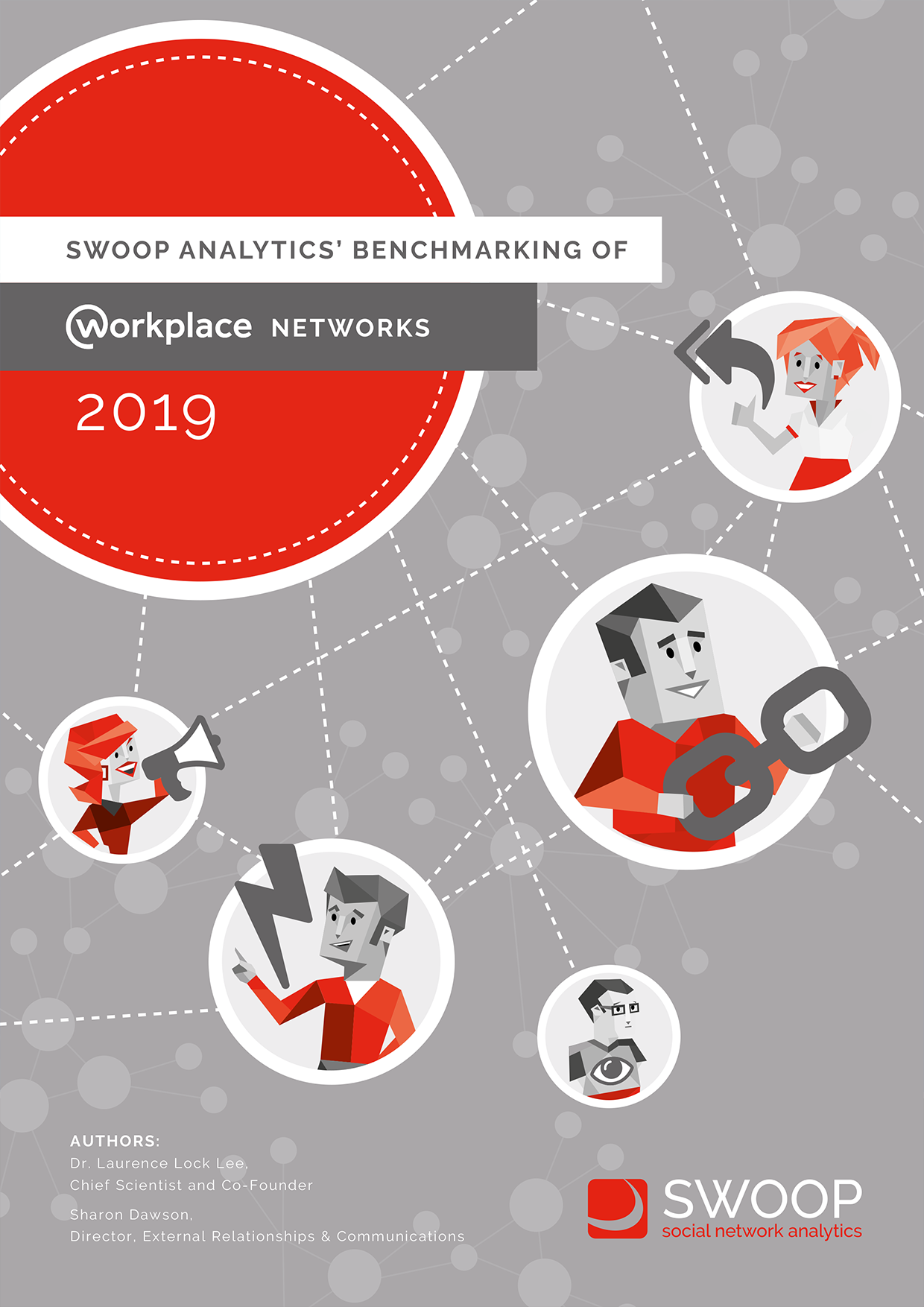
Download: BENCHMARKING REPORT
Workplace Benchmarking Report 2019
Read more from SWOOP on Workplace from Meta
You may have great leaders in your organisation, but are they great digital leaders?
As hybrid work becomes the new norm, it is imperative leaders are able to connect and communicate in digital spaces, not just face-to-face or in an office environment.
Becoming a great digital leader doesn’t happen by accident. It takes work and planning. Global food and beverage giant Nestle has shared how it coaches its great digital leaders.
Watch COO Dr Stephen Weller present on ACU's experiences with Workplace for employee engagement and measuring success with SWOOP.
Service NSW is a government agency whose leadership team listens to employees on Workplace from Facebook and asks questions to learn from frontline workers.
What do stingless bees have to do with a Workplace network? For ACU, they show how Workplace has connected thousands of staff across the country.
Westpac and NBN's CEOs both use the same collaboration analytics tool, SWOOP Analytics, to measure how well top managers are engaging with staff.
AMP New Zealand kicked off its Workplace network when the CEO sent an all company email saying this was his last email of the kind, it’s time to head to Workplace.
Customer Success Network created a Workplace community for customer success managers to ask questions and learn from each other.
Insurance company Ageas UK was the top performer for medium-sized businesses in SWOOP’s 2019 Benchmarking report of Workplace networks.
The success of Workplace at NBN Co has the potential to become its own enemy because so many people are using it and the information swells every day.
NBN's Pat Devery talks with Cai Kjaer from SWOOP Analytics about their experiences with Workplace from Facebook.
Mercy Corps uses SWOOP Analytics to see who is connecting on Workplace, what posts people are engaging with, and which teams are talking to each other.
In late 2016, Wingu launched Workplace and SWOOP to give their millennial workforce the ability to connect, communicate, collaborate and innovate.
NSW DPI is saving money and time every day using Workplace to engage and collaborate, while SWOOP is giving a clear view of where better connections are needed.
When ACU launched Workplace, one man hoped to use it as a platform to reduce their carbon footprint. But was he engaging the whole organisation? ACU turned to SWOOP for the answers.
As the #MeToo campaign flooded social media, NBN CEO, Bill Morrow, wrote an open post on Workplace asking victims to come forward. In seconds the post lit up.
TAFE NSW rely on SWOOP to pinpoint the “black holes of communication” and see exactly where help is needed on their Workplace from Facebook network.
Learn how to revive your Yammer or Workplace from Facebook community.
Have you ever wondered about the impact of adding photos, videos, GIFs or links to your post in your enterprise social network?
Are you ready to say goodbye to all-company emails? We look at five Workplace from Facebook companies who have put a stop to the all-company email and instead communicate and collaborate on Workplace.
We thought we’d explore how organisations are really going using our SWOOP sentiment analysis data from the past three months; covering the period of “pre-COVID-19”, “Transition to Working From Home” and now “Working From Home (WFH)”.
Have you ever wanted to better understand how productive you, your team and your organization really are when it comes to collaboration? If ever there was a time to research the effectiveness of how an organization is collaborating, it’s now. For those of you who have undertaken any experimental research, you will appreciate how hard it is to undertake a large-scale controlled experiment.
Under the above scenario it’s clearly better to have Workplace from Facebook in place than not. But I suspect few of us would see all our anxieties from the COVID-19-enforced change to our working environments overcome that simply. Most of us have had the experience of working from home (WFH) occasionally, but what about when your whole team has to WFH?
You may have seen on your personal SWOOP dashboard something called the Diversity Index. You will also see it at the Groups, Team, Business Unit/segment and Enterprise levels where we average the diversity scores across the respective membership. In this article, we explain why and how the Diversity Index is actually calculated.
Within 10 months of launching Workplace, more than 5,000 Compass real estate agents reported Workplace had helped them grow their business and make more money. Compass’ Workplace network has shown immediate value in its ability to create instant, revenue-generating connections across the family of Compass agents.
SWOOP has developed a range of training cards to help motivate your staff to become more collaborative on Yammer and Workplace from Facebook.
I've written before about how we need to move beyond the ubiquitous “culture survey” into real-time digital sensing, where we draw cultural assessments from how employees actually behave online.
Collaboration platforms Microsoft Teams and Workplace by Facebook are saving companies millions of dollars every year, resulting in up to 800% in ROI by keeping employees engaged and connected. But without analytics to help you clearly understand where collaboration is – and isn’t – happening you have no way of measuring if you’re receiving the business benefits.
Enterprise Social Networks like Yammer and Workplace by Facebook promote employee engagement and enhance performance, especially if leadership is engaged, according to ground-breaking new research from Griffith University.
Global creative agency We Are Social enjoys an active, productive global digital community for its 750 employees and can claim Workplace from Facebook as a truly integral part of its business and culture. We Are Social shares its experience to achieve success on Workplace.
Digital teams are way too large to enjoy the benefits of being a truly high productive team. At an average size of 296 members, there is little chance of achieving the level of cohesion and productivity that more appropriately sized non-digital teams do. A fundamental shift is required in how digital teams are formed. If teams are to truly perform online, they should limit their size to less than 10 members.
Not too many companies can claim they saved a life using their Workplace network. Global travel agency Flight Centre can.
Other than simple reports on digital team size and number of messages shared, the team-level analytics currently available are rudimentary at best. My previous article on building effective digital teams examined research my company, Swoop Analytics, did on over 1,300 self-declared digital teams across several organizations using the Workplace by Facebook platform. The average membership from these "teams" was nearly 300 and therefore, most could not be considered real teams. Nevertheless, one would expect that many, in spite of their size, are gaining value from their use of the digital platform.
What do stingless bees have to do with a Workplace network? For Australian Catholic University (ACU), the stingless bees are an example of how its Workplace network has connected thousands of staff across the country and led to immediate business value.
At SWOOP we’ve recently conducted the world’s largest-ever analysis of Workplace by Facebook networks, examining 68 organisations worldwide who opted into SWOOP’s benchmarking.
As stories of sexual abuse flooded social media in response to the #MeToo awareness campaign, NBN Co chief executive Bill Morrow’s thoughts went straight to his employees.
SWOOP has conducted the world’s largest-ever analysis of Workplace by Facebook networks, examining 68 organisations worldwide who opted into SWOOP’s benchmarking. The analysis represents more than 630,000 users over a six-month period, a significant proportion of Workplace’s two million paid users, and more than 15 million online interactions, across a breadth of industry sectors and geographies.
One of our most enduring observations from organisations successfully using Enterprise Social Networking (ESN) platforms is the important role the CEO and executive leaders have played in the network’s success.
It is more important than ever for senior leaders to build trust by establishing two-way conversations with their people – at scale. In this article, we’ll give simple, practical and evidence-based tips for achieving this spending just five minutes per day. We’ll also show you how to measure this at the individual level.
We were intrigued and somewhat excited when we saw HR guru Josh Bergin’s take on the evolution of the Employee Engagement marketplace. Bergin is an internationally renowned HR, People and Talent analyst, who recently provided his Top 5 Digital trends in HR.
It’s a busy day, and you’re a busy person. Just how many groups can you realistically participate in on your enterprise social network? Pick a number and we’ll get back to that in a moment.
While Enterprise Social Networking sites have taken their lead from consumer-facing Social Media platforms, there are many situations where good practices in social media just do not map over to Enterprise Social.
We recently completed what we believe is the largest study of digital team collaboration performance ever undertaken. We analyzed 1,360 digital teams from nearly 70 organizations from a full breadth of industries and geographies. The digital interactions of over 400,000 team members and nearly 2 million interactions over an extended 6-month period were analyzed. Our sample was drawn from users of the collaboration platform Workplace by Facebook, where groups have been self-identified as a team.
This question was recently posed to us and we didn’t have a quick answer. In this post we have taken the time to make a considered response to a question we expect all of those considering SWOOP would be interested in.
Many organizations equate digital workplace performance to social media consumption. Senior leaders communicate their vision and objectives down through the organizational hierarchy, with success measured through the perceived employee engagement with those corporate messages. We have been benchmarking organizations’ digital collaboration performance for more than three years, building a database with more than 130 organizations, more than 2 million employees and more than 23 million digital interactions in the process.
In this final article in our series on Enterprise Social Group types, we address “non-work” groups and their importance to community success.











